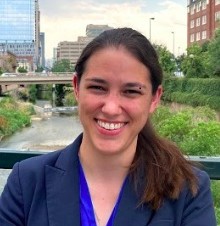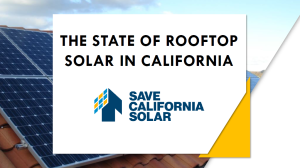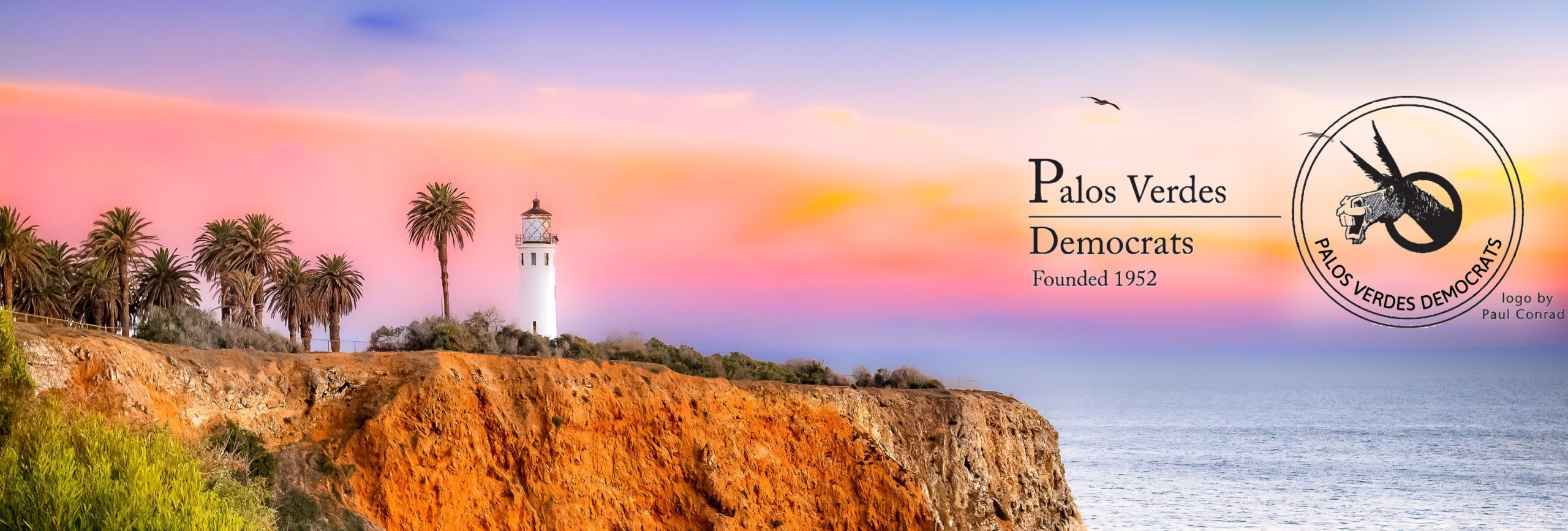
By Nancie Silver —
The Palos Verdes Democrats met in person and on Zoom on Sunday, March 19 to hear a presentation by featured speaker Cailey Underhill, Advocacy and Development Director of the Solar Rights Alliance, who discussed the state of rooftop solar in California.
If you were unable to attend the March 19 meeting, I strongly encourage you to watch the full presentation by Cailey Underhill shown at the end of this article. She is a dynamic and articulate speaker who talked about the mission of the Solar Rights Alliance, trends in rooftop solar in California, the effect of the proposed CA Public Utilities Commission (CPUC) solar tax on energizing proponents of the solar industry, net energy metering (NEM), and an appeal to the recent CPUC decisions. Cailey provided specific information for potential new solar customers and current users who want to expand their solar panels. She also discussed actions that Solar Rights Alliance is taking and what individuals can do to support the solar industry. You can access her presentation slides here 
Cailey said California needs more solar to achieve California’s energy goals and solar was increasing for all income levels prior to the CPUC December 2022 decisions. She discussed the effect of the remarkable grassroots Save California Solar Campaign to stop the Solar Tax, cuts to the solar bill credit, and retroactive changes for existing solar customers. “The Save California Campaign,” according to Cailey, “stopped the Solar Tax dead in its tracks…[and] that’s a big deal.”
Unfortunately, the Campaign was not able to stop the CPUC from reducing the solar credit for new customers or making changes affecting existing customers who want to increase the size of their system. Cailey offered a detailed explanation about the difference between the current NEM1 and NEM2 rules, and the new NEM3 rules which is now in effect for anyone going solar after April 14, 2023. She detailed what cuts to the solar bill credit means since the recent CPUC rules went into effect and what will be required by CPUC for submission by April 14, 2023. See the What the cut to solar credit means in slides 7, 8, and 9.
Cailey shared what the Solar Rights Alliance is planning to do in response to these CPUC changes. First, they are working to modify the NEM3 decision. Second, they plan to “fight like hell to make sure a solar tax never sees the light of day again.” Third, they want to make batteries less expensive by reducing red tape and advocating for battery rebates. And fourth, they will continue to educate the public about various options and address misinformation.
A NEM3 appeal can be addressed in three possible arenas – by the legislature (but it seems unlikely), the pros and cons of a ballot measure (very expensive) or appeal the decision in the courts (in process). The Solar Rights Alliance is focusing on the appeal option. There are three groups who have filed an appeal to the CPUC, which has until the end of March to respond. If it doesn’t respond, these three groups – The Center for Biological Diversity, Environmental Working Group, and Protect Our Communities Foundation – may take this appeal to the courts. The appeal lays out five ways the CPUC decision violates the law and their own regulations. See the NEM3 Appeal in slide 11 for details.
Taking an appeal to the courts is subject to the whims of the judge, so there are other actions proposed by the Solar Rights Alliance. Cailey proposed actions that our club can take to support the appeal See the How Palos Verdes Democrats can help slide 12, as well as actions individuals can take See the How individuals can help slide 13. Solar Rights Alliance is working on a battery rebate and will hold a battery webinar soon, as well as a campaign to streamline the permitting process. She discussed SB 379 that mandates that cities switch to an automated rooftop solar permitting system by September 2023. This is a funded mandate so there is a grant available for cities to assist them in switching to automated permitting by completing a checklist. See Making it faster and easier to go solar in slide 14.
Cailey also mentioned Virtual Power Plants (VPP), community solar, microgrids, and built-out areas that could be utilized for solar, such as parking lots, highways, and big box store rooftops. Virtual Power Plants (VPP) are networks of small energy-producing storage devices, like solar panels and batteries, connected virtually to produce power for customers. Community solar is an offsite array where people can buy or lease a portion of the array, and a microgrid is an interconnected power system that can be connected to the grid or off grid. Built-out areas such as parking lots and highways can also be used to generate renewable energy. Senator Becker’s bill, SB 49, provides a sales tax exemption for solar canopies over parking lots and directs Caltrans to make strategic plans that make rights-of-ways available for leasing for renewable energy or distribution. Big box store rooftops are another option. Environment America and Environment California are advocating solar on big box stores, and over parking lots and highways.
Audience Q&A
Q: Can you get a battery to store your own power? Yes, anyone can get their own battery to store excess energy produced from your solar panels. If you get enough storage batteries, you can be off the grid, but once you’re off and disconnected, you can’t connect again if you suddenly decide you need to, so you need to know what you’re doing before you make that decision.
Q: Can you speak about the advantages of installing one’s own solar panels rather than getting renewable energy form SCEs Green Rate Program or being a member of the Orange County Power Authority? There are several ways to get energy in California. Remember that the 75% cut discussed regarding the switch to NEM3 is in effect for areas controlled by SCE, SDG&E, or PG&E. One advantage to having your own solar panels is that it’s your own energy and another advantage is lower electricity bills. If you don’t have that option, you may choose to utilize one of these other options. Do what works best for your situation.
Q: What are the solar programs for apartment owners where each tenant pays their own electric bill? Programs do exist for apartment owners, called VNEM (virtual net energy metering).
Q: Can you please explain the difference between NEM1 and NEM2? There is a slim difference between the two, mainly NEM1 is for people whose 20-year contract is about to expire. NEM1 customers used to be able to roll over credits from one year to the next, and they were not on a Time of Use plan.
Q: I have a contract from SunRun and it’s too long and complicated to make sense of, so do you have any information on this type of contract, since they are telling me I have to act as soon as possible, or I will miss the April 14 deadline? Cailey said to send the contract to her, and she can look it over. Also, Cailey clarified the important dates and deadlines. The CPUC said the complete interconnection application must be SUBMITTED by April 14 and it must be free of any major deficiencies. It doesn’t have to be APPROVED by this date.
Cailey spoke again about benefits of SB 379, the bill that mandates cities switch to an automated rooftop solar permitting system by September 2023. She also recommended asking solar installers about PPAs (power purchase agreement), a long-term contract between an electricity generator and a customer, usually a utility.
The PV Dems will add the upcoming Solar Rights Alliance webinar to our website when Cailey gives us the date. After the meeting, she sent us the following links:
- Here is the Streamlined Solar Permitting Campaign Toolkit for anyone who would like to get involved in the effort to streamline rooftop solar permitting to make it faster and easier for people to go solar
- Here is the FAQ and webinar about the changes to NEM and how we got there
- Here is the link to the Solar Rights Alliance Consumer Guide for the articles I was referencing about choosing an installer and a battery
Cailey Underhill may be reached by email at cailey@solarrights.org or by phone at 909-610-9768.

Leave a Reply